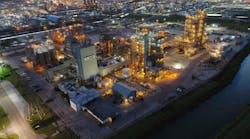For the last three months, I described the decision process used in the mid-1980s to apply a Coriolis mass flowmeter in ammonia service operating at a relatively low density (Aug. page 14, Sept. page 12, Oct. page 14). I had apprehensions about using a Coriolis mass flowmeter in this application, and those apprehensions were validated by the first two attempts to employ the meter in this situation. The 1-inch Coriolis mass flowmeter installation created such a large obstruction to flow that the flowmeter would not pass (even close to) the operating flow. The installation with a 1.5-inch Coriolis mass flowmeter was barely able to pass the design flow, while operating at almost double the nominal operating pressure.
The first order of business the next day was to call the engineer at the factory, describe the situation, and ask him to investigate (again). The engineer called later and told me that the 1.5-inch Coriolis mass flowmeter was properly sized and confirmed that the pressure drop at design conditions would be approximately 400 mbar (6 PSID). He also suggested there could be an issue in the inlet and/or outlet piping that could be causing the overall pressure drop to increase.
With that, I came to the stark realization that I was now on my own. A little bit of extra knowledge had allowed me to make the decision to push Coriolis mass technology. Now I had to live with my decision and recognize that I could not have others (such as the manufacturer) resolve the problem. Nor could I avoid blame if the flowmeter did not function properly. The problem fell squarely on my shoulders (as it should).
Strike three? Find out how the problem was ultimately resolved next month.
NEXT ARTICLE: Success at Last!—Specifying a Coriolis mass flowmeter for gas service
David W. Spitzer is a regular contributor to Flow Control magazine and a principal in Spitzer and Boyes, LLC offering engineering, seminars, strategic marketing consulting, distribution consulting and expert witness services for manufacturing and automation companies. He has more than 35 years of experience and has written over 10 books and 250 articles about flow measurement, instrumentation and process control.
Mr. Spitzer can be reached at 845 623-1830 or ?www.spitzerandboyes.com. Click on the “Products” tab to find his “Consumer Guides” to various flow and level measurement technologies.



